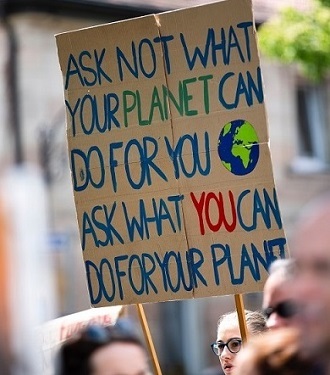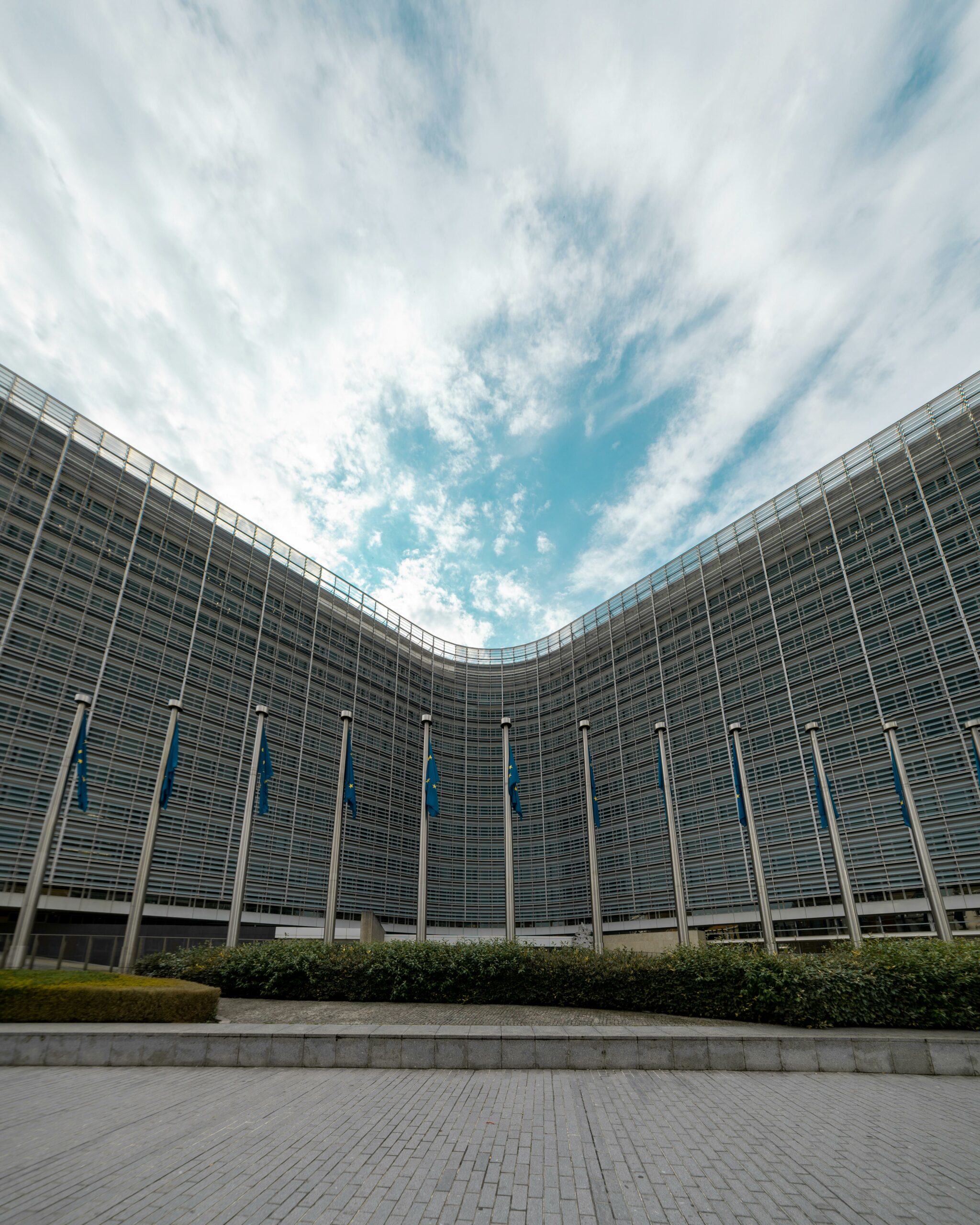This article was initially published here, for the site LeadersIn.com. Author Leah Kinthaert asked eight influential sustainability strategists ranging from a Chief Sustainability Officer to a Former Head at World Economic Forum to ask them either what is the most important directive for their organization around sustainability OR what they believe should be the number one most important directive for any organization around sustainability. Integration of sustainability into an organization’s core business values – as opposed to focussing on any one single sustainability ‘hot topic’ – was a recurring theme. Ksapa has been delighted to contribute. Here are the perspectives provided by the eight thought leaders. Visit LeadersIn.com for additional insights.
In his Harvard Business Review article last year Matt Gitsham discussed a growing trend of corporate leaders being remarkably proactive about sustainability: “If global temperatures rise more than 1.5 °C, the risks of draught, floods, forest fires, heat-related deaths and loss of agricultural productivity all worsen significantly… Predictably, environmentalists, pro-environment politicians, and countries especially vulnerable to climate change have reacted to all of this with distress. But perhaps a little less predictably, so have many business leaders.” Eillie Anzotti writing for Fast Company shared a similar viewpoint: “In times of political inaction at the national level in the U.S., people anxious for positive news have been looking to businesses and the corporate sector to step up. And, pleasantly, many have delivered.” John Weiss, Director of Corporate Programs for Ceres summed it up for SustainAbility: “Companies are reaffirming their commitments because they need to be responsive not only to the growing number of investors who understand the bottom-line implications of climate action (or inaction) but also to a global marketplace where climate remains at the top of the agenda.” Facing pressures from employees, customers and stakeholders, corporate attention to sustainability is certainly growing; it’s also rapidly evolving from environmental sustainability to also include cybersecurity, risk and CSR issues such as diversity and inclusion. It’s clear that sustainable development, once seen as “nice-to-have” is now a business imperative.
There are a great deal of ideas floating around out there about corporate sustainability, but there does not seem to be a consensus of just what is the number one priority or issue for companies. To add to the confusion, there are multiple, separate organizations that are tracking and monitoring corporate sustainability, here I will name just a few. We know that globally 682 companies, from The Coca-Cola Company to Carrefour, are taking “science-based climate action,” and that number has tripled since April 2018; additionally 285 companies have set “Science based targets”, meaning they are “in line with what the latest climate science says is necessary to meet the goals of the Paris Agreement”. Sustainablebrands tells us that out “of 200 giant corporations… the number of companies with public, specific targets (was) 188 (94 percent)” in 2017. Brookings reports that “7,500 companies issue annual sustainability or corporate responsibility reports in accordance with the Global Reporting Initiative”. The Ellen MacArthur Foundation, whose primary focus is developing a circular economy for plastic, has 250 organizations on board with a pledge that “all plastic packaging be reusable, recyclable, or compostable” by 2025.
Read what Ioannis Ioannou, Associate Professor, Strategy and Entrepreneurship, London Business School; George Bandy, Chief Sustainability Officer, Mohawk Group; Alison Taylor, Executive Director, Ethical Systems, New York University; Wolfgang Lehmacher, Supply Chain and Technology Strategist, Former Head of Supply Chain and Transport Industries World Economic Forum; Farid Baddache, CEO, KSAPA; Debra Ruh, Global Disability Inclusion Strategist, CEO, Ruh Global Communications; Jed Emerson, Founder, Blended Value Group; and James Ellsmoor, Founder & CEO, Island Innovation, have to say on the topic.
Farid Baddache, CEO, KSAPA, @FBaddache
“A triple digital, social and environmental revolution is underway. Business has no choice and needs to quickly adapt to keep up with markets and customers. Clear business case managing related risks and seizing opportunities provided with transformations underway should be priority #1 of any business leader no matter what job or industry.”
Ioannis Ioannou, Associate Professor, Strategy and Entrepreneurship, London Business School, @iioannoulbs
“I do not think that there is one single thing that organizations are focusing on, to be frank. There is a huge amount of experimentation on the ground, across all E, S, and G issues, and at the same time, different companies are focusing on different issues, depending on what is material for the industry that they are in. The one thing I would say is that the best of companies deeply engage with their stakeholders, understand the relative materiality of the resulting ESG issues, and then try to integrate them into their strategy and business models in a way that generates both financial as well as socio-environmental value. This is no easy task due to the sheer number and complexity of the issues. But that’s precisely what distinguishes the best from the average companies: their ability to effectively deal with the underlying complexity as well as the conflicts, roadblocks and trade-offs that exist across a company’s stakeholders.”
“Finally, another key piece of the puzzle is the structural integration of an ESG commitment into the organisation: it has to be reflected into the corporate governance, the depth and breadth of the stakeholder engagement, the adoption of long-term time horizons for decision making and the degree of transparency and accountability that the organization is willing to adopt. As I often say to my students, a genuine commitment to sustainability is about a transformational journey and a fundamental cultural shift for the organization that chooses to make this commitment; but it pays off. It is, in my opinion, the only way to future-proof organisations against a background of rapidly worsening social and environmental issues.”
George Bandy Jr., Chief Sustainability Officer, Mohawk Flooring North America, @Ecomafia12
“The largest directive for Mohawk Industries at this current time is focusing on how sustainability impacts people. The environmental and economic components are certainly important, but they also tie into the most valuable entity: our employees. So whether that is nature-inspired design and its impact on people inside of our workspaces; our Healthy Life Centers that help ensure our employees thrive; our new SHINE program that encourages and rewards employee health and wellness activities; or any number of our initiatives—these elements create a sense of value, comfort and wellness for this valuable resource. We also actively work to maintain this same level of commitment externally by leveraging our flooring to help create spaces that are safe and contribute to health and wellbeing, so that end users can be as productive, innovative and creative as possible. We also believe in the importance of supporting the communities where we live, work and play with our time and monetary resources through impactful organizations like the United Way and Susan G. Komen. These partnerships allow our employees to give back in meaningful ways at the local level and beyond. These commitments help us cross-pollinate with the seeds of sustainability so that we can begin to catapult this message and this focus on people throughout our organization and outside our four walls. We believe in the importance of creating more social ‘handprints’ versus environmental footprints, and this is perhaps best embodied in a strong commitment to and focus on our employees and greater society.”
Alison Taylor, Executive Director, Ethical Systems, New York University, @FollowAlisonT
“There is a pressing need for companies to reconsider the role of the sustainability function. Above all, it is the role of the sustainability lead to understand and translate the core concerns of society, and to ensure that the company responds to these concerns by making concrete changes in how they operate. Customers and other stakeholders can tell if sustainability is just a cynical marketing effort rather than a genuine attempt to rethink how the company manages its environmental and social impacts. There remains great confusion about what skills are needed to work in sustainability, what department it should sit in, and what value it brings. By understanding that organizational change is the primary goal, and by framing efforts in terms of stakeholder needs, we can address much of this confusion.”
Wolfgang Lehmacher, Supply Chain and Technology Strategist, Former Head of Supply Chain and Transport Industries World Economic Forum, @W_Lehmacher
“Corporates create and destroy value. Assessment of businesses’ consequences, today and tomorrow, requires profound analysis. The starting point for our action is the objective and collectively acknowledged baseline of the economic, environmental and social business impact.”
“In the interest of our children’s future, I am relieved to see that sustainability has increased in priority on the corporate agenda. This, because sustainable action has become a straightforward hardcore business consideration. In ocean shipping for example, the IMO 0.5 percent global cap on Sulphur dioxide content in fuels enters into force January 1st, 2020. The compulsory switch will affect at least 60,000 vessels and is estimated by shipping executives to cost up to $50 billion industry-wide. The Sulphur cap needs will be followed by the carbon reduction pressures. On Friday April 13th, 2018, the IMO Marine Environment Protection Committee (MEPC) agreed on a target to cut the shipping industry’s overall CO2 output by 50 percent by 2050 compared with 2008 levels. This isn’t an easy undertaking.”
“Sustainability should have been part of a business’ value proposition from the outset. What’s the point of consuming at the detriment of the lives of our next generations? At the Annual Meeting of the World Economic Forum in Davos 2010, I was part of a group of chief executive officers that decided to establish a base line for carbon emissions. This approach should have been replicated across all industries as well as the entirety of harming effects of doing business. This includes protecting native groups, for example in the Amazon and the forests and orangutans in Indonesia.”
“I continue to believe that contributing to establish the baseline for external damage of doing business should be the number one most important directive for any organization around sustainability as the starting point for neutralizing negative effects of our doing.”
Debra Ruh, CEO, Ruh Global IMPACT, @debraruh
“As a Global Disability Inclusion, TECH4ALL, TECH4GOOD, Beneficial AI Strategist – I encourage our global clients to focus on positive social impact and to take the time to talk about your efforts. Globally we find, people’s expectations of corporations are changing and society wants corporations to focus on more than shareholder value and profits. We expect corporations to focus on making the world a better place for all people and the planet. One great place to start would be to implement the United Nations (UN)Sustainable Development Goals (SDGs). The 17 SDGs are a guide that can be invaluable to a corporation’s sustainability, inclusion, and Corporate Social Responsibility (CSR) efforts. One way to focus on the people aspect is by inclusive hiring of persons with disabilities. People with disabilities have been disenfranchised and left out of the workforce for too long. The aging populations all over the world are creating major disruption and these disruptions are creating opportunities to include everyone in the workforce. Corporations need to focus sustainability efforts on all aspects of sustainability and that includes the inclusion of disenfranchised members of society.”
“Inclusion of diverse communities like the community of Persons with Disabilities as employees, customers, vendors, and shareholders can add great value to a company’s bottom-line. The global economy makes disability inclusion and accessibility a higher priority in terms of product design given an increasingly competitive marketplace. These efforts help expand the pool of eligible applicants as well as helping to attract the most talented applicants. They also have the potential to increase your customer base. Efforts to improve the accessibility and ease of use of workplace technologies improve the work environment for employees with disabilities and mature workers who acquire disabilities as they age. These efforts also attract technology-savvy younger workers who are attracted by the added functionality of workplace technology. Making technology accessible helps mitigate legal risk by providing appropriate tools both internally (employees) and externally (customers). It improves retention and reduces costs associated with training new employees. All generations expect positive impacts, but the younger generations have vowed to only support brands that are making a positive difference in the world. They have clearly stated in various studies that they are willing to pay more money to do business with brands that have a positive social impact. It is time for corporations to truly embrace sustainability, inclusion and Corporate Social Responsibility.”
Jed Emerson, Founder, Blended Value Group, @BlendedValue
“The most important consideration for any organization looking to operate within a sustainability framework is to ensure its leadership and members/stakeholders have taken the time to step back from their existing business model to truly reflect, personally and professionally, upon how they understand the central tenets of the purpose of capital. Organizations can take many forms (for-profit, nonprofit, cooperative, hybrid and so on…), but which form—and then that entity’s operating strategy and practices—depends first and foremost on how that organization’s stakeholders understand the nature of the value they are attempting to create. Increasingly, that value is understood by growing numbers of business leaders as a blend of financial, social and environmental performance—the Triple Bottom Line reintegrated into Blended Value. With that understanding then in mind, entrepreneurs and investors may begin to define their understanding of the central purpose of the capital they raise and deploy through the firm—whatever form that firm takes. In the absence of this clarity with regard to purpose, we tend to confuse tool with task—we think a good strategy and operating practices pegged to ‘sustainability’ will get us where we need to go when, in truth, we risk becoming what Martin Luther King, Jr. described as our having ‘guided missiles and misguided men’. Absent purpose, we will be tempted to take the lower road to what is at heart our highest potential calling: the creation of fully integrated, blended value created as an outcome of how we manage our capital, our organizations and our lives.”
James Ellsmoor, Founder & CEO, Island Innovation, @jellsmoor
“True sustainability needs to account for the entire value chain and move beyond just focusing on the environment. For corporates, greenwashing a few parts of the business with prestige projects may gain short-term attention, but they need to be integrated in longer-term strategic planning to ensure there are no unintended consequences. Many businesses choose to have a CSR effort that is separate to the core of their business and in my view this misses the point and neglects a big opportunity to drive change while growing the business.”
Author of several books and resources on business, sustainability and responsibility. Working with top decision makers pursuing transformational changes for their organizations, leaders and industries. Working with executives improving resilience and competitiveness of their company and products given their climate and human right business agendas. Connect with Farid Baddache on Twitter at @Fbaddache.






